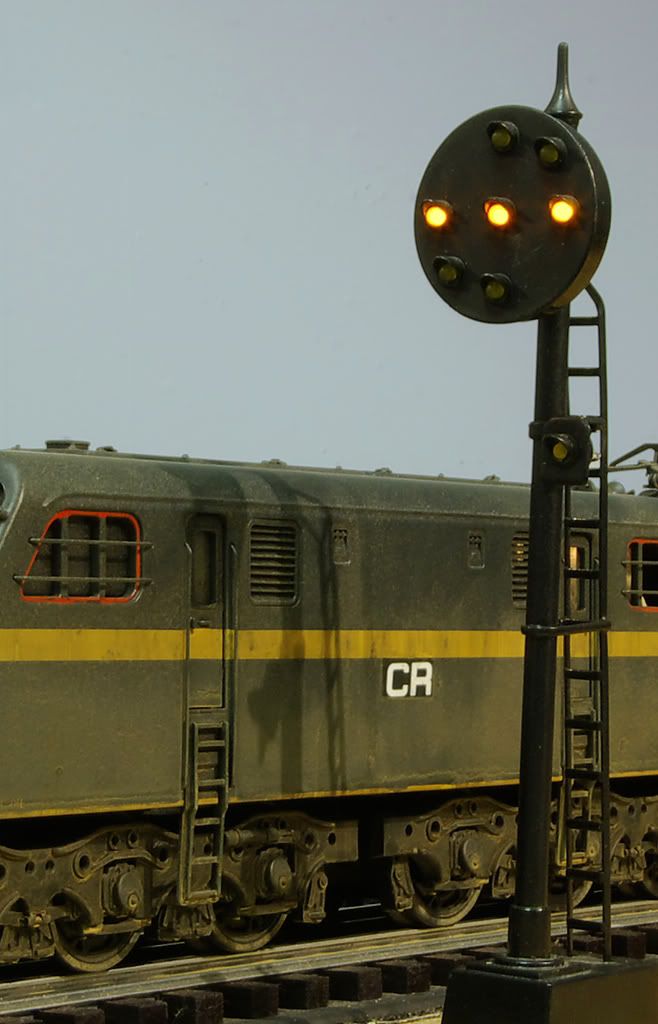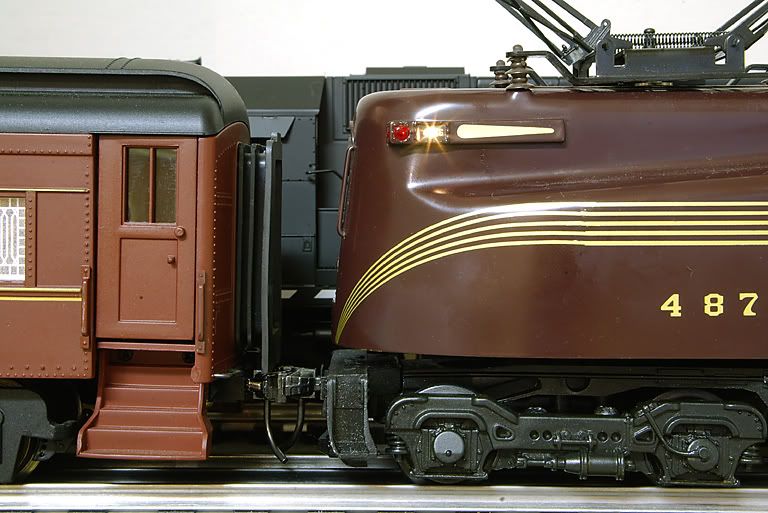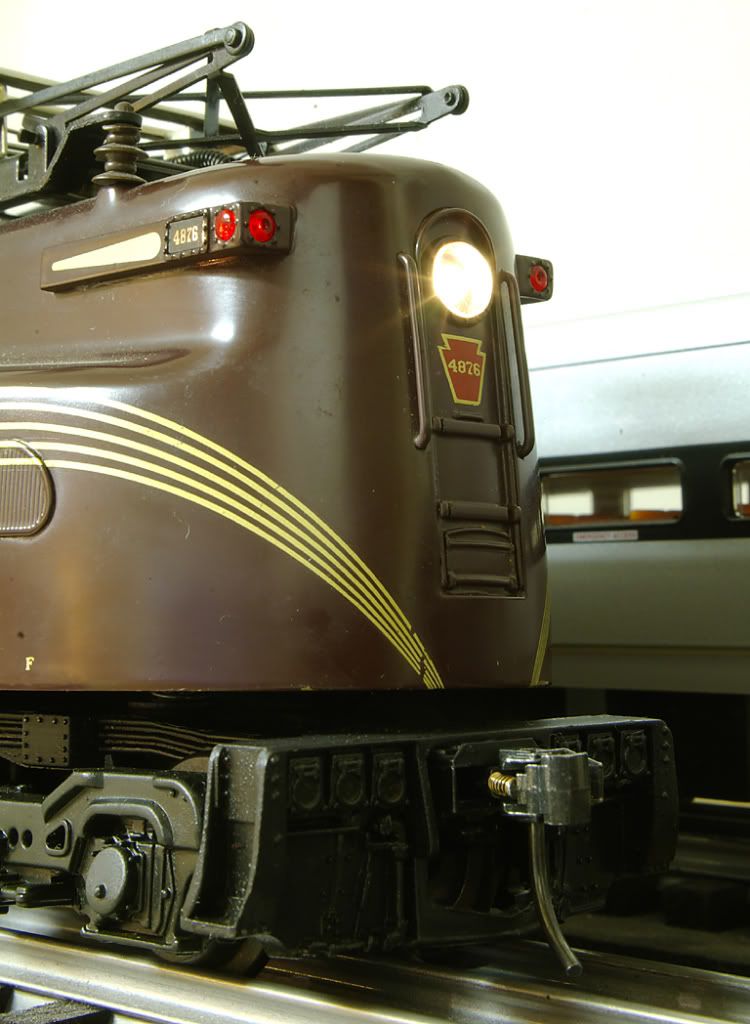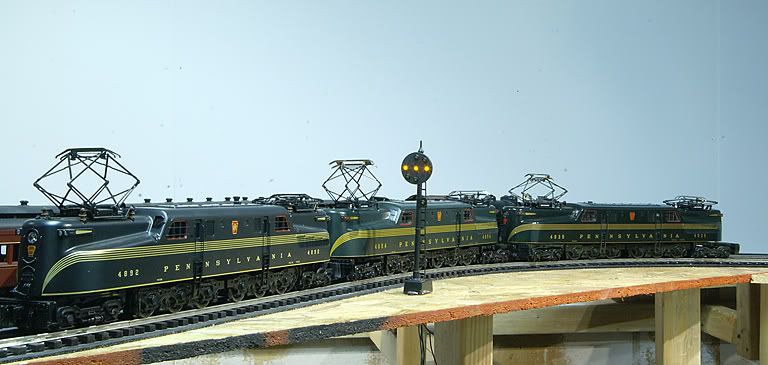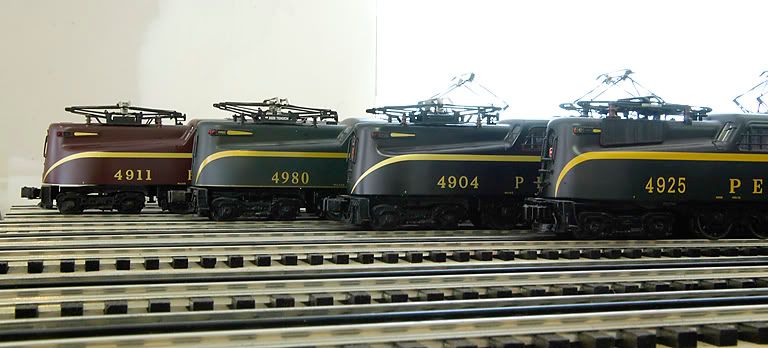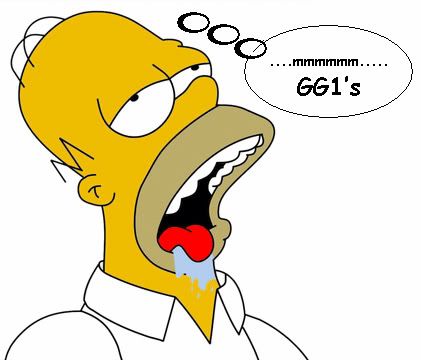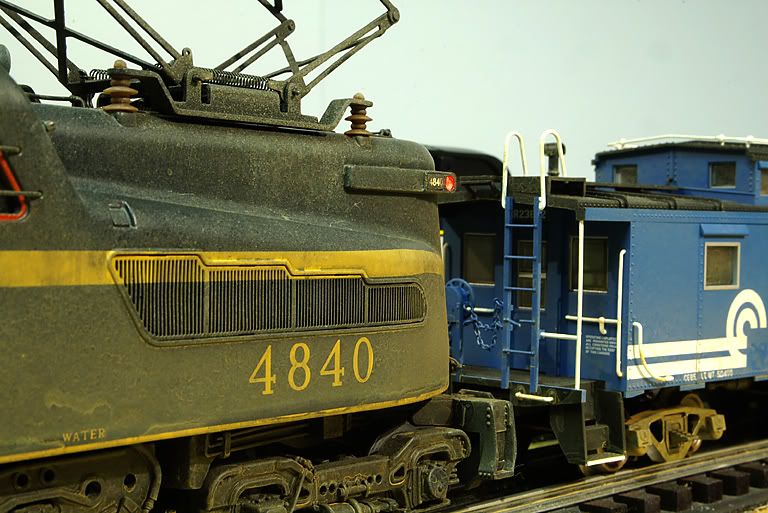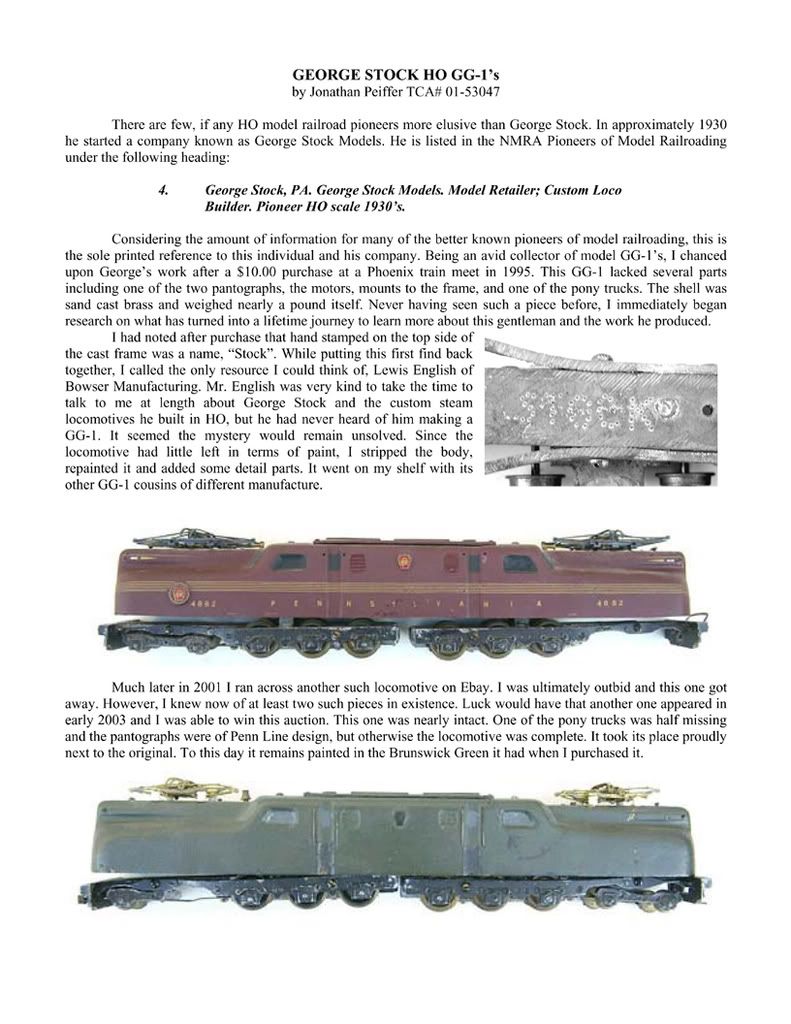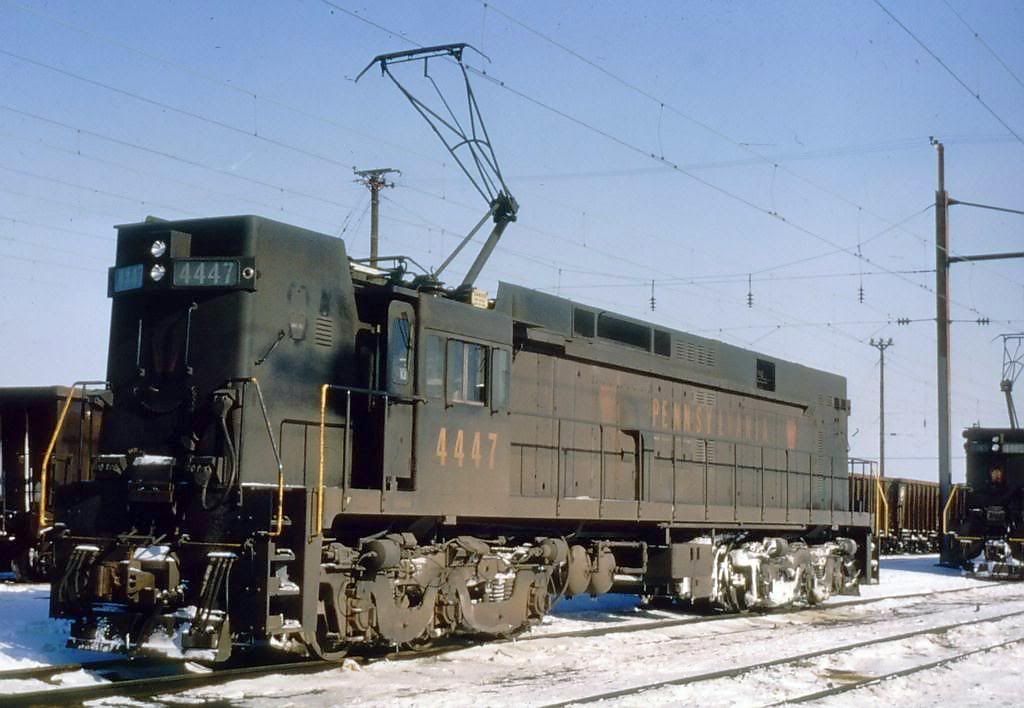Raymond Loewy was responsible for the improvements to the original design of the GG1, but did not design the GG1.
The original GG1 came from Baldwin as road number 4899. At the same time a similar locomotive of a 4-8-4 wheel arrangement known as the R1 was built in Altoona and was numbered 4800.
Both locomotives were based on the modified P5a design. The original P5a was a boxcab and after a fatal grade crossing accident, the PRR modified the design to the steeple cab design.
This does come together eventually!

All the of these locomotives shared very similar construction types - individually cut body panels that were riveted and strapped together. They very much had the feel of OLD with the plethora of rivets across the body.
To make a long story longer - the R1 and GG1 squared off at Claymont under very rigorous testing that included sensors in the track in addition to monitoring locomotive performance. In the performance category, the R1 and the GG1 were nearly a wash. The main difference came down to tracking and stress on the rails. The rigid framed R1 did not track as well as the GG1 and was very hard on the rails. Ultimately the GG1 was selected for mass production and received number 4800, while the R1 got number 4899.
Raymond Loewy was brought on board to suggest ideas for improvements to the design. In his own words, he explained that he didn't do much. However, what he did was dramatic. His contribution to the GG1 included a minor redesign of the shape of the body to make it more aerodynamic looking. He proposed welded body panels in lieu of the riveted ones. This was revolutionary for locomotive design at the time. He also designed the famous five gold stripes on DGLE paint scheme under the guise of making them 'more visible' to workers on the tracks. Finally, he redesigned the class light placment, removed all the externally mounted parts that he could and generally created a separate class of locomotive from the prototype 4800.
Goes to show that the devil is in the details.
The PRR, loath to throw anything away until it was used up, ran the R1 4899 (renumbered to 4999 in the 40's) until about 1960. It often pulled the Broadway Limited out of Harrisburg. It did have a penchant for throwing switches in Philly occasionaly, but it worked hard during it's life as the ugly step-child to the GG1. GG1 4800 of course had a very full life working up through Conrail.
I need to get this issue of CTS!


